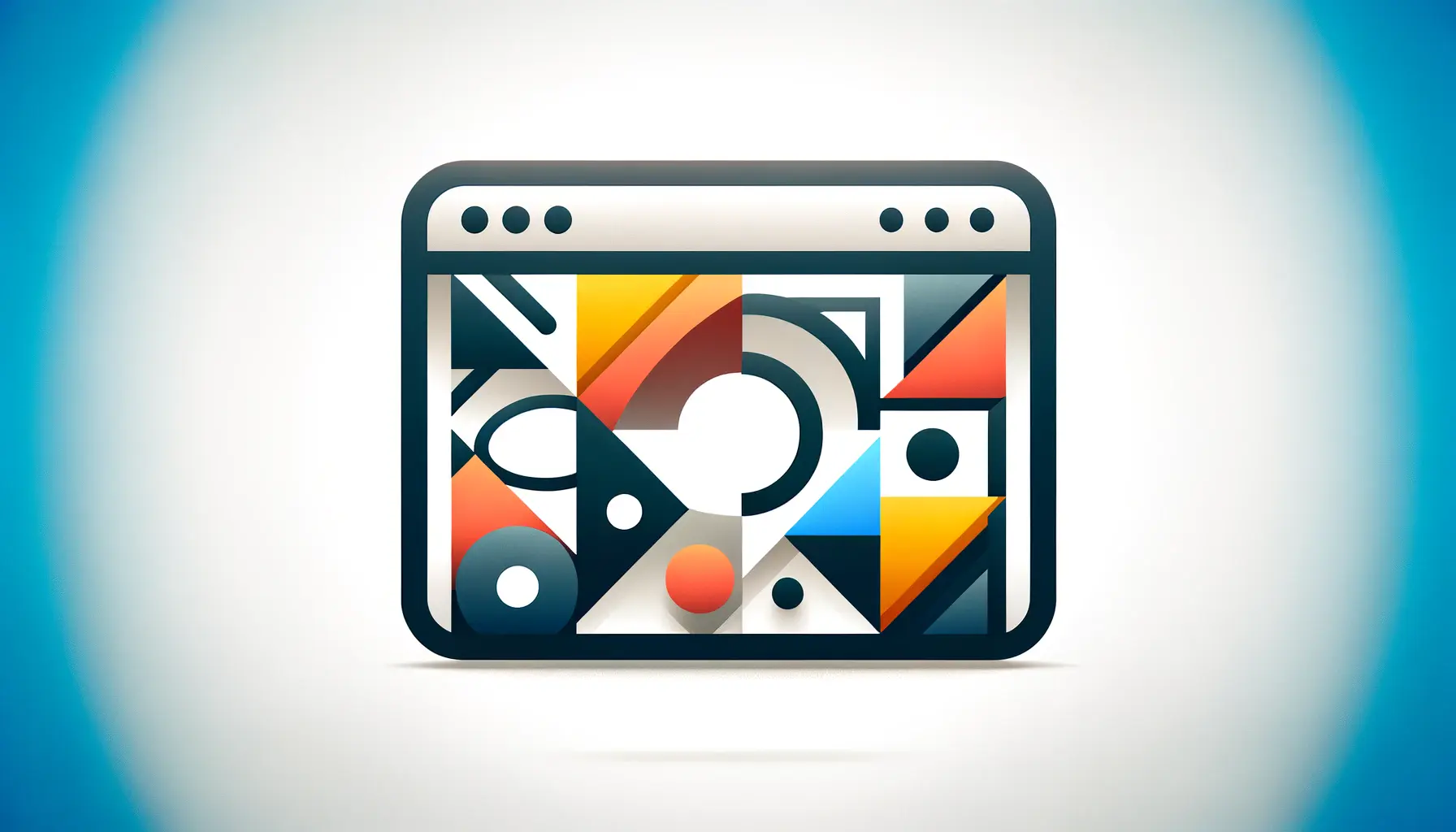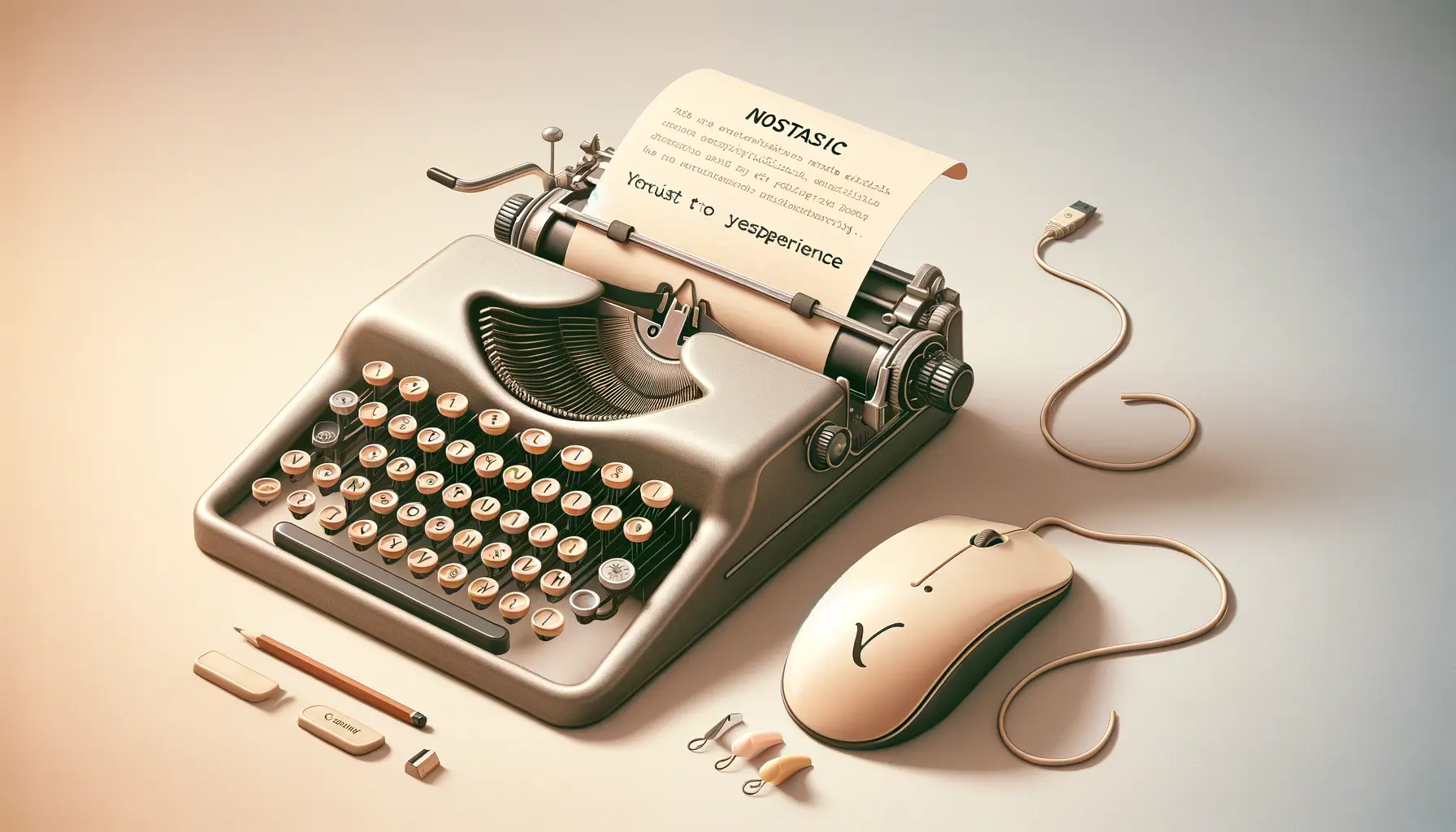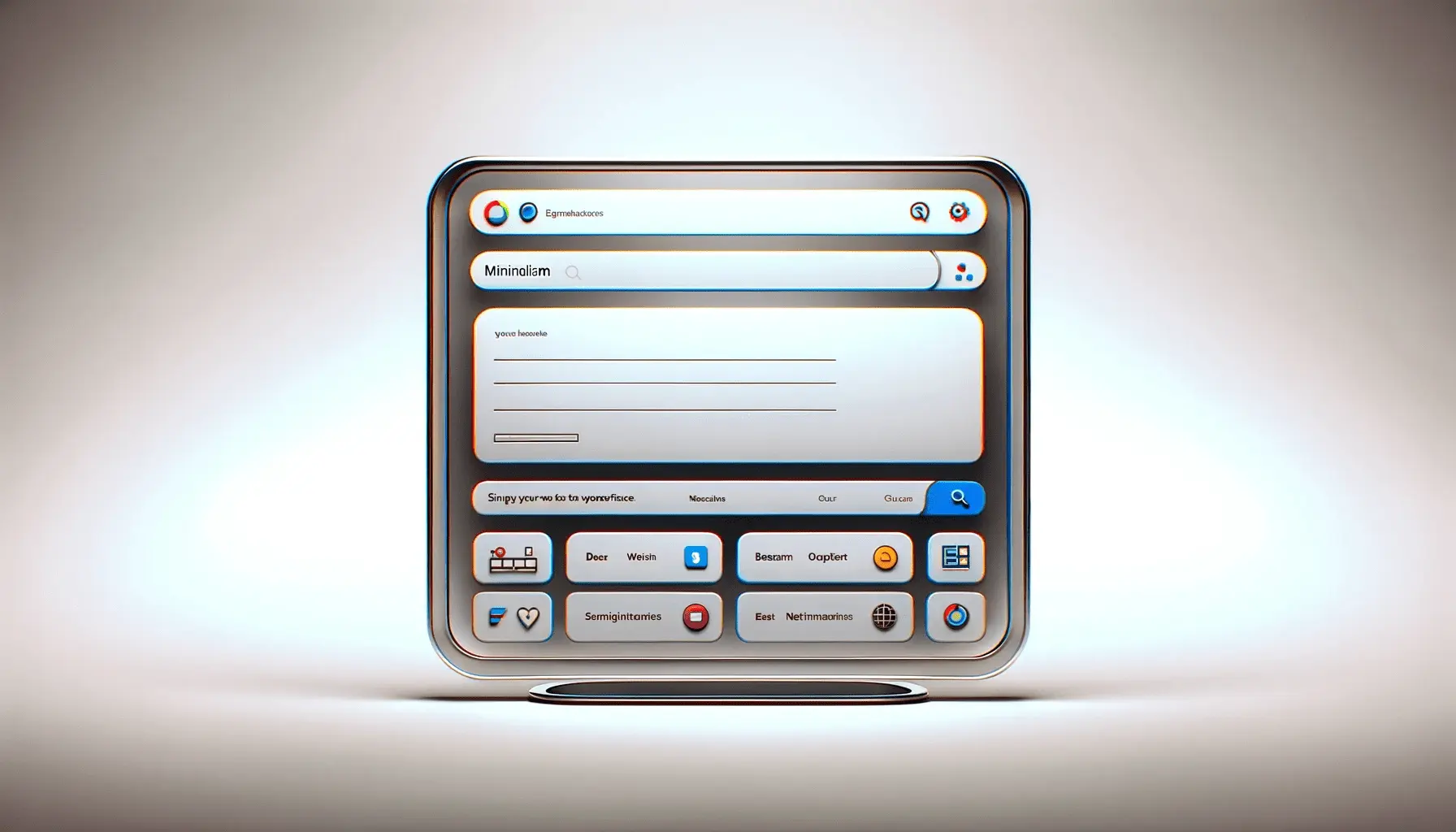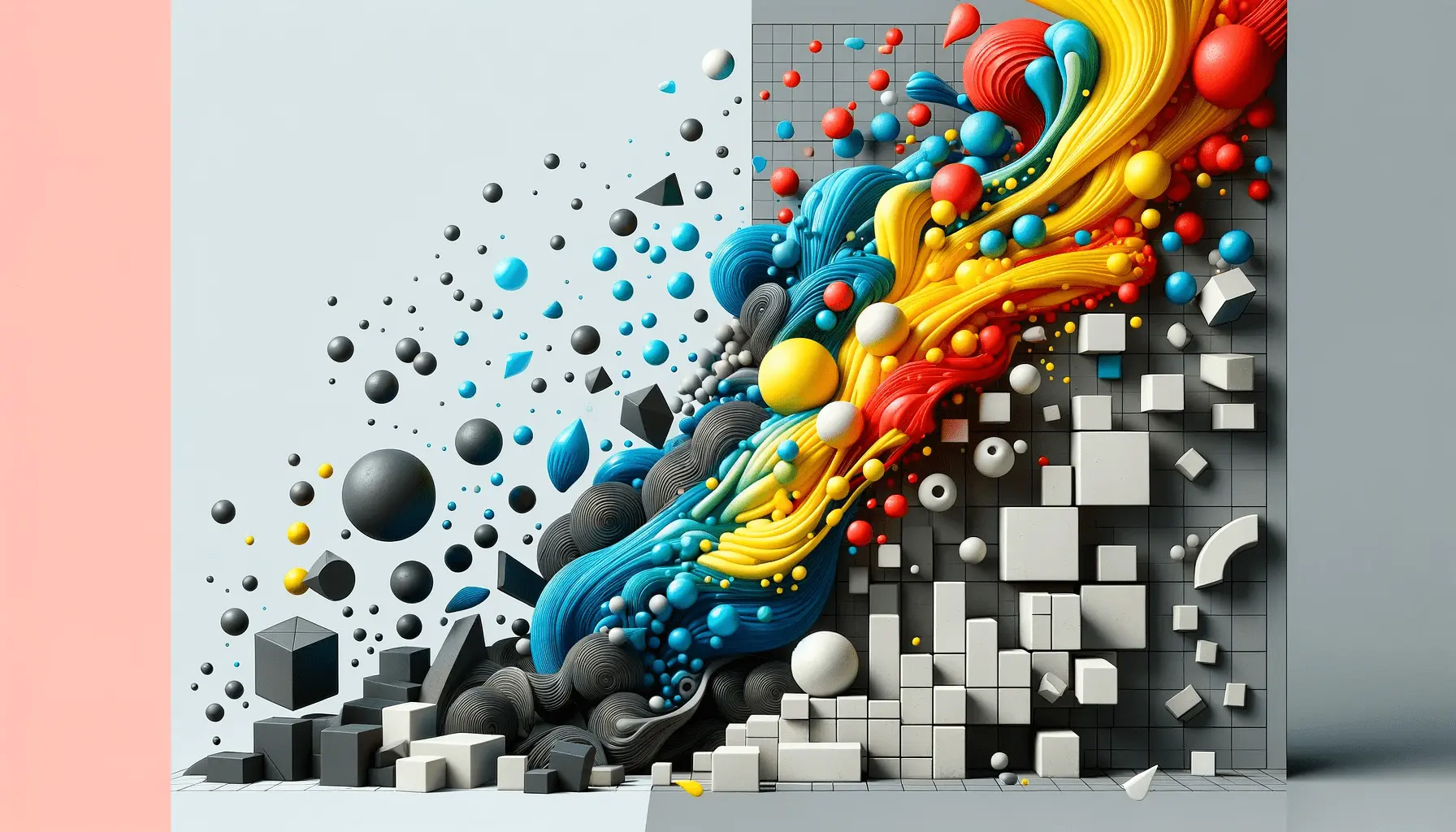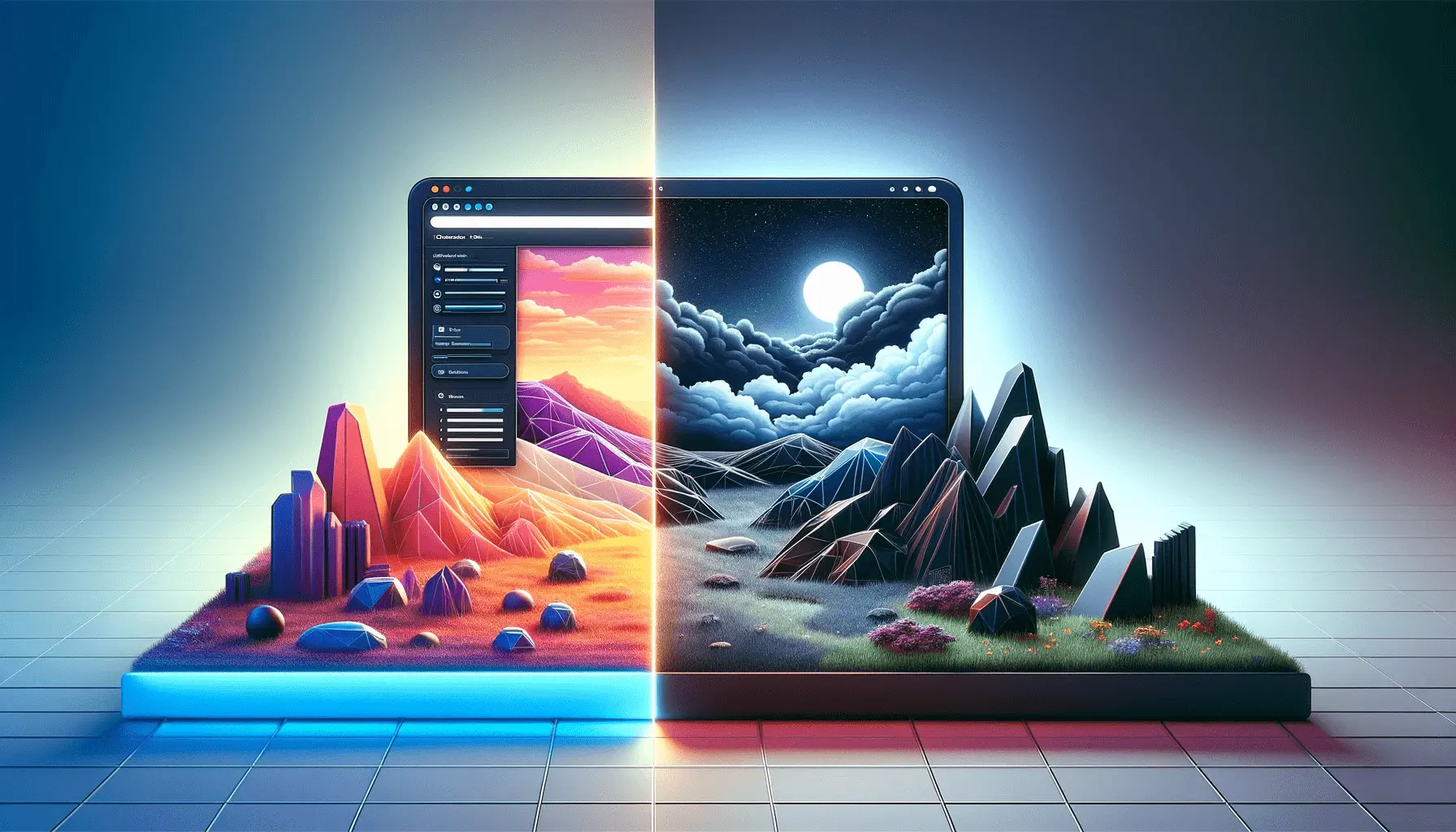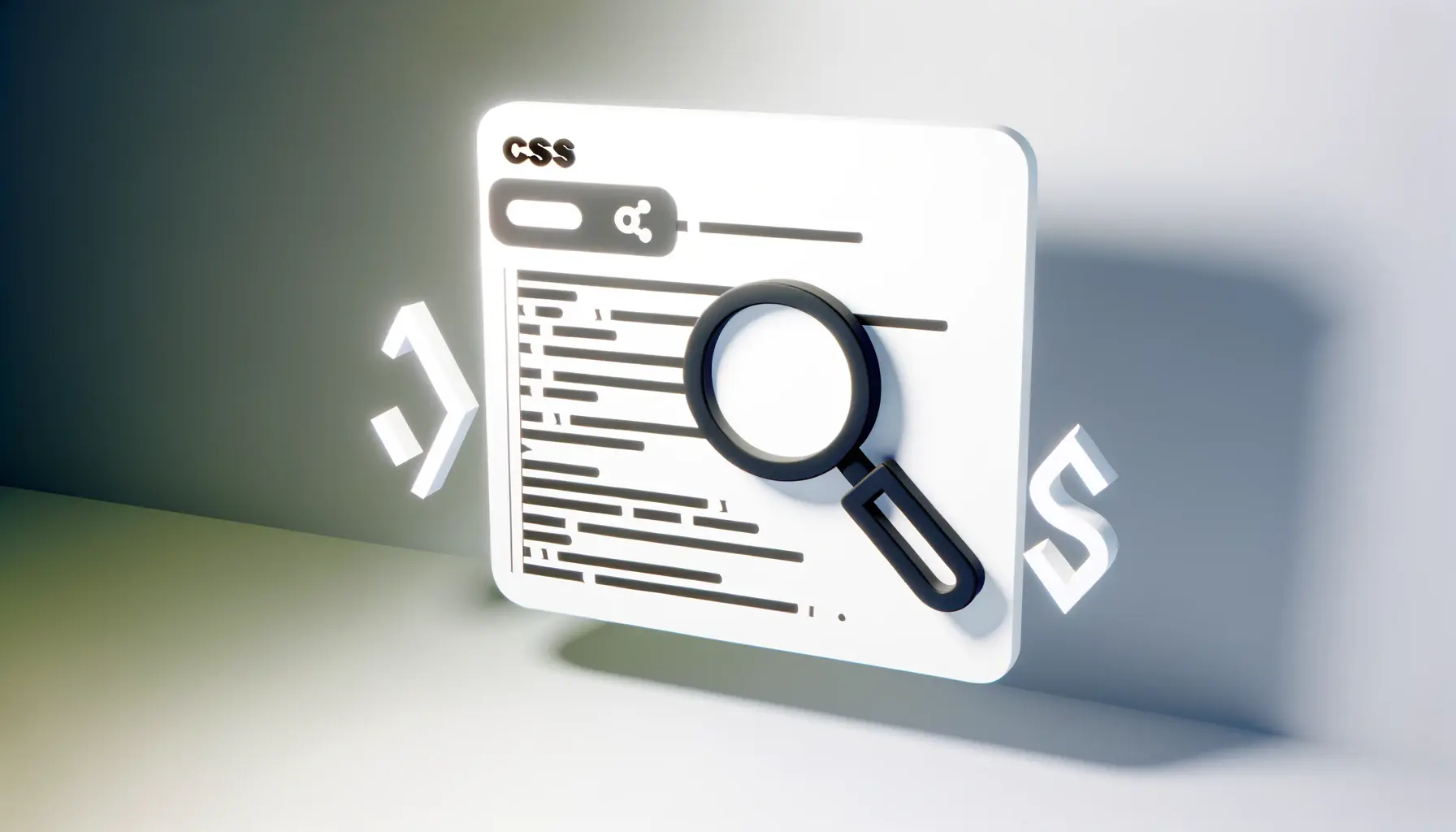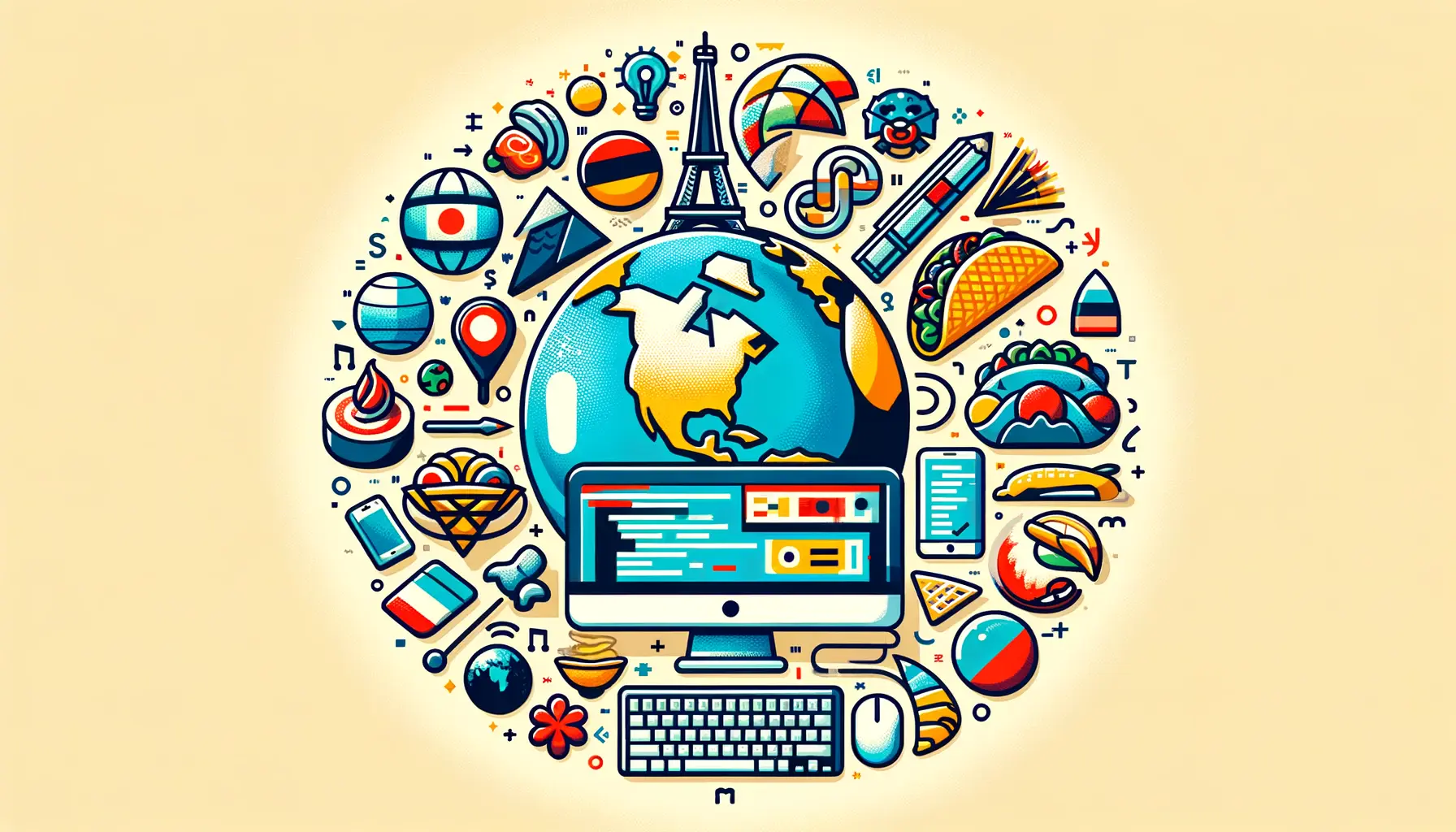The realm of digital design is constantly evolving, with typography at its core shaping the way we interact with online content.
Geometric typography, with its roots deeply embedded in the principles of geometry, has emerged as a pivotal element in modern web design.
This style of typography is celebrated for its clean lines, clear structure, and the ability to convey information in a visually appealing manner.
It’s not just about aesthetics; geometric typography enhances readability, user experience, and the overall impression of a website.
At the intersection of art and mathematics, geometric typography offers a fresh perspective on how text can be both functional and artistic.
This approach to type design is characterized by the use of simple geometric shapes – circles, squares, and triangles – to form letters and numbers.
This simplicity does not equate to dullness; instead, it opens up a world of creative possibilities.
Designers leverage these shapes to create typefaces that are modern, dynamic, and adaptable to various digital platforms.
The versatility of geometric fonts makes them a go-to choice for brands looking to establish a contemporary and innovative online presence.
- The Evolution of Geometric Typography
- Design Principles Behind Geometric Typography
- Impact of Geometric Typography on User Experience
- Geometric Typography in Web Design Trends
- Choosing the Right Geometric Font for Your Website
- Integrating Geometric Typography with Web Design Elements
- Future Directions for Geometric Typography in Web Design
- Embracing Geometric Typography: A Path Forward in Web Design
- Geometric Typography FAQs
The Evolution of Geometric Typography
The Historical Context
The journey of geometric typography began in the early 20th century, marking a departure from traditional serif fonts towards more abstract and simplified forms.
This shift was influenced by the Bauhaus movement, which emphasized the harmony between function and design.
The movement’s principles of clarity, simplicity, and attention to geometric shapes laid the groundwork for the development of geometric typefaces.
These fonts were not only a reflection of the aesthetic preferences of the time but also a response to the technological advancements and the need for more legible typefaces in advertising and signage.
As digital technology progressed, so did the application and popularity of geometric fonts.
The advent of computer graphics and digital design tools in the late 20th century provided designers with unprecedented freedom to experiment with shapes and proportions, leading to the creation of innovative typefaces that pushed the boundaries of traditional typography.
Today, geometric fonts are synonymous with modernity and are widely used in digital media to convey clarity, efficiency, and forward-thinking.
Characteristics and Appeal
Geometric typefaces are distinguished by their reliance on simple geometric forms.
The capital ‘O’, for example, is often a perfect circle, while the ‘E’ and ‘L’ might be based on rectangles with precise proportions.
This reliance on geometric shapes results in a uniformity and consistency that is visually pleasing and easy to read.
The simplicity of geometric typography does not limit its expressiveness; rather, it provides a clean slate for creativity, allowing designers to imbue personality and character into their creations.
The appeal of geometric typography lies in its versatility and adaptability.
Whether it’s a minimalist website, a vibrant digital advertisement, or a sleek mobile app, geometric fonts can enhance the design without overwhelming the content.
This balance between form and function makes geometric typography a powerful tool in the arsenal of modern web designers.
The ability to maintain legibility across different screen sizes and resolutions further solidifies its place in the digital landscape.
Geometric typography, with its perfect balance of form and function, not only enhances the aesthetic appeal of modern websites but also improves user experience by ensuring clarity and readability.
Design Principles Behind Geometric Typography
Geometric typography is not just about the shapes of letters and numbers; it’s a design philosophy that integrates key principles to create typefaces that are both beautiful and functional.
Understanding these principles is essential for designers looking to leverage geometric typography in their digital projects effectively.
Balance and Proportion
At the heart of geometric typography lies the concept of balance and proportion.
Designers meticulously calculate the size, spacing, and alignment of geometric shapes to create harmonious typefaces.
This balance ensures that the text is not only aesthetically pleasing but also readable.
Proportion, particularly in the relationship between different letters and within letters themselves, is crucial for maintaining a cohesive look across a typeface.
- Consistency: Uniformity in character design ensures a seamless reading experience.
- Spacing: Adequate letter spacing avoids crowding and enhances legibility.
- Alignment: Proper alignment contributes to the overall balance of the text, making it more attractive.
Simplicity and Clarity
The simplicity of geometric typography is one of its most appealing features.
By stripping away unnecessary embellishments, designers can focus on the essence of the message they wish to convey.
This minimalist approach does not detract from the typeface’s impact; rather, it amplifies it by making the text clear and straightforward.
Clarity is paramount in digital design, where users often skim content.
Geometric typefaces, with their clean lines and uncluttered appearance, facilitate quick and easy comprehension.
- Minimalism: Embracing minimalism to focus on the content’s core message.
- Readability: Ensuring text is easily scannable for enhanced user engagement.
Adaptability and Versatility
Geometric fonts shine in their ability to adapt to various design contexts.
Whether it’s a headline, body text, or call-to-action, these typefaces can be scaled and styled to fit the needs of any project.
Their versatility extends to different media types and screen sizes, making them ideal for responsive web design.
The geometric nature of these fonts means they retain their integrity and legibility whether displayed on a large desktop monitor or a small mobile screen.
- Scalability: Effective at any size, from large headlines to small body text.
- Styling: Can be styled in numerous ways (bold, italic, etc.) without losing legibility.
Understanding and applying the principles of balance, simplicity, and adaptability are key to creating effective geometric typography for modern websites.
Impact of Geometric Typography on User Experience
The influence of geometric typography on user experience (UX) is profound and multifaceted.
In the digital realm, where first impressions are crucial, the choice of typography can significantly affect how users perceive and interact with a website.
Geometric fonts, with their clean and modern aesthetic, play a pivotal role in shaping these interactions.
They not only contribute to the visual appeal of a site but also its usability and accessibility.
One of the key aspects of UX design is readability.
Text that is easy to read and understand encourages users to spend more time on a site, exploring its content.
Geometric typography, with its emphasis on clarity and legibility, enhances the readability of web content.
The simplicity of geometric shapes ensures that letters and numbers are distinguishable at a glance, which is particularly important in the fast-paced online environment where attention spans are short.
Enhancing Brand Identity
Typography is a powerful tool for brand identity.
The right typeface can convey a brand’s personality and values without a single word being read.
Geometric fonts, often associated with modernity and innovation, are an excellent choice for brands looking to project a forward-thinking image.
By incorporating geometric typography into their visual identity, companies can make a strong statement about their brand and differentiate themselves from competitors.
- Consistency: Using geometric fonts across all digital platforms ensures a cohesive brand experience.
- Personality: The modern and clean look of geometric fonts can reflect a brand’s innovative and efficient character.
Improving Navigation and Hierarchy
Effective website navigation depends on clear visual cues that guide users through content.
Geometric typography, with its ability to create distinct visual hierarchies, aids in this process.
By varying font weights, sizes, and colors, designers can indicate the importance of different text elements, making it easier for users to find what they are looking for.
This not only improves the overall user experience but also contributes to a site’s accessibility, ensuring that information is accessible to everyone, regardless of their ability or device.
- Visual Hierarchy: Clear distinctions between headings, subheadings, and body text guide the user’s eye.
- Accessibility: Good typography practices enhance a website’s usability for individuals with disabilities.
Incorporating geometric typography into web design not only elevates the aesthetic appeal of a site but also significantly enhances user engagement and interaction by improving readability, navigation, and brand perception.
Geometric Typography in Web Design Trends
The landscape of web design is ever-evolving, with typography playing a crucial role in the emergence and development of design trends.
Geometric typography, in particular, has seen a surge in popularity, becoming a staple in many modern web designs.
This trend is not just a fleeting fashion; it reflects a broader shift towards simplicity, efficiency, and digital optimization in design practices.
Geometric fonts, with their clean lines and straightforward shapes, are at the forefront of this movement, offering a blend of aesthetic appeal and functional utility that resonates with contemporary audiences.
One of the reasons geometric typography has become so popular in web design is its versatility.
These fonts can be seamlessly integrated into a variety of design styles, from minimalist to maximalist, and everything in between.
Whether the goal is to create a bold statement or a subtle background element, geometric fonts can adapt to meet the designer’s vision.
This adaptability makes them an invaluable tool for designers looking to stay on the cutting edge of web design trends.
Minimalism and Beyond
Minimalism has been a dominant trend in web design for several years, and geometric typography fits perfectly within this aesthetic.
The simplicity of geometric fonts complements the minimalist philosophy of reducing elements to their essential forms.
However, the application of geometric typography extends beyond minimalism.
Designers are also using these fonts in more complex and dynamic compositions, leveraging their clarity and legibility to create contrast and focus in visually rich environments.
- Minimalist Websites: Geometric fonts enhance the clarity and readability of minimalist designs.
- Dynamic Interfaces: In more complex designs, geometric fonts provide a stabilizing element that guides the user’s eye.
Responsive and Adaptive Design
As the use of mobile devices continues to rise, the importance of responsive and adaptive design in web development cannot be overstated.
Geometric typography plays a key role in this context, offering excellent scalability and readability across a range of devices and screen sizes.
The inherent simplicity of geometric shapes ensures that text remains legible and aesthetically pleasing, even when scaled down for small screens.
This adaptability is crucial for creating cohesive user experiences across different platforms.
- Scalability: Geometric fonts maintain their legibility and aesthetic appeal at various sizes, making them ideal for responsive design.
- Cross-Platform Consistency: Using geometric typography ensures a consistent brand identity across desktop and mobile platforms.
The rise of geometric typography in web design trends underscores its ability to blend aesthetic appeal with functional utility, making it a key component in creating responsive, engaging, and visually cohesive websites.
Choosing the Right Geometric Font for Your Website
Selecting the perfect geometric font for a website is a critical decision that can significantly impact its overall look and feel.
With the vast array of geometric fonts available, it’s essential to consider several factors to ensure the chosen font aligns with the website’s design goals and audience expectations.
This process involves more than just picking a font that looks good; it requires a thoughtful evaluation of how the font will function in the site’s specific context and contribute to its usability and brand identity.
Understanding the characteristics of geometric fonts and how they can be leveraged to enhance a website’s design is the first step in making an informed choice.
The ideal geometric font should not only be visually appealing but also complement the website’s content, structure, and design aesthetic.
It should enhance readability, reinforce the brand’s personality, and contribute to a cohesive visual hierarchy.
Considerations for Font Selection
When choosing a geometric font for your website, several key considerations can guide the decision-making process:
- Website Purpose: The font should align with the website’s objectives, whether it’s to inform, entertain, or sell.
- Brand Identity: The chosen font should reflect the brand’s values and personality, contributing to a consistent brand image.
- Readability: Above all, the font must be legible across different devices and screen sizes, ensuring a positive user experience.
- Design Compatibility: The font should complement the website’s design elements, including color schemes, imagery, and layout.
Testing and Implementation
Once a geometric font has been selected, it’s crucial to test it in various contexts to ensure it performs well across all aspects of the website.
This includes evaluating the font’s readability on different devices, its impact on page loading times, and its compatibility with other fonts used on the site.
Implementing the font with attention to detail, such as adjusting line spacing and letter spacing, can further enhance the text’s readability and aesthetic appeal.
- Responsive Testing: Ensure the font remains legible and visually appealing on desktop, tablet, and mobile devices.
- Performance Evaluation: Assess the font’s impact on website performance, including load times and rendering speed.
Choosing the right geometric font is a meticulous process that involves balancing aesthetics with functionality, ensuring that the font not only looks good but also enhances the user experience and supports the website’s goals.
Integrating Geometric Typography with Web Design Elements
Integrating geometric typography into a website’s design requires a harmonious balance between the font and other design elements.
This integration is crucial for creating a cohesive and visually appealing online presence.
Geometric fonts, known for their clean lines and modern aesthetic, can significantly enhance a website’s design when used thoughtfully.
The key to successful integration lies in understanding how geometric typography interacts with colors, images, layout, and interactive elements to create a unified design language.
The process involves more than just selecting a geometric font; it requires a strategic approach to design that considers the overall user experience.
The goal is to use geometric typography not just as a tool for conveying information but as an integral part of the website’s design narrative.
This approach ensures that the typography complements and enhances the other design elements, rather than competing with them or feeling out of place.
Harmony with Color and Imagery
Color and imagery are powerful tools in web design, capable of evoking emotions and conveying messages.
Geometric typography, with its inherent simplicity, works well with a wide range of color palettes and imagery styles.
The key is to ensure that the font color contrasts sufficiently with the background for optimal readability, while also complementing the overall color scheme.
Similarly, when pairing geometric fonts with images, consider the balance between the text and visuals to ensure that neither overwhelms the other.
- Contrast and Legibility: Use color contrast to enhance the readability of geometric typography against different backgrounds.
- Complementary Colors: Select font colors that complement the website’s color palette and imagery.
Layout and Spatial Relationships
The layout of a website plays a critical role in how content is perceived and interacted with.
Geometric typography can influence the layout by dictating text alignment, spacing, and the overall flow of information.
Effective use of white space around geometric text can enhance readability and focus attention on the content.
Additionally, the spatial relationship between text and other design elements should be carefully considered to create a balanced and visually appealing composition.
- White Space: Utilize white space effectively to highlight geometric typography and improve readability.
- Alignment and Flow: Align geometric text with other design elements to create a cohesive and intuitive layout.
Interactive Elements
Interactive elements, such as buttons and links, are essential components of web design, guiding users through the website.
Geometric typography can enhance these elements by making them more visible and appealing.
The clarity and simplicity of geometric fonts make them ideal for call-to-action (CTA) buttons and navigation menus, where legibility is paramount.
By integrating geometric typography with interactive elements, designers can create a user-friendly interface that encourages engagement and facilitates navigation.
- CTA Buttons: Use geometric fonts to make CTAs stand out and encourage user action.
- Navigation Menus: Enhance the usability of navigation menus with clear, legible geometric typography.
Effective integration of geometric typography with web design elements requires a thoughtful approach that considers the interplay between text, color, layout, and interactivity, ensuring a harmonious and user-friendly website.
Future Directions for Geometric Typography in Web Design
The future of geometric typography in web design looks promising, with evolving technologies and design philosophies continually shaping its application.
As digital landscapes become more complex and user expectations grow, the role of typography in creating accessible, engaging, and aesthetically pleasing online experiences becomes increasingly critical.
Geometric typography, with its perfect blend of form and function, is well-positioned to meet these challenges head-on, offering designers a versatile tool that adapts to the changing demands of web design.
Emerging technologies such as variable fonts, augmented reality (AR), and virtual reality (VR) are set to redefine the possibilities of web typography.
Geometric fonts, with their scalable and adaptable nature, are particularly suited to these new mediums, where flexibility and readability across diverse platforms and devices are paramount.
As web design continues to evolve, the application of geometric typography will likely expand, pushing the boundaries of what is possible in digital communication and design.
Variable Fonts and Responsive Design
Variable fonts, which allow a single font file to behave like multiple fonts through adjustable parameters (such as weight, width, and slant), offer exciting possibilities for geometric typography.
This technology enables geometric fonts to be more responsive and adaptable to user contexts, enhancing the user experience by providing dynamic text that adjusts to various display environments and user preferences.
As variable fonts become more widespread, their integration with geometric typography will likely become a standard practice in responsive web design.
- Adaptability: Variable fonts enable geometric typography to adjust seamlessly across different screen sizes and orientations.
- User-Centric Design: They allow for personalized reading experiences, catering to individual user needs and preferences.
Augmented Reality and Virtual Reality
As AR and VR technologies become more integrated into web experiences, the role of typography in these immersive environments cannot be underestimated.
Geometric typography, with its clarity and legibility, is ideally suited for AR and VR applications, where text must be easily readable within three-dimensional spaces.
The potential for geometric fonts to enhance navigational cues, informational displays, and interactive elements in AR and VR environments is vast, opening up new avenues for creative and functional web design.
- Immersive Experiences: Geometric typography can contribute to more immersive and interactive AR and VR experiences.
- Legibility in 3D: The simplicity and clarity of geometric fonts ensure legibility in complex three-dimensional environments.
The future of geometric typography in web design is intertwined with technological advancements, offering new opportunities for innovation and creativity. As designers explore these possibilities, geometric typography will continue to play a pivotal role in shaping the next generation of digital experiences.
Embracing Geometric Typography: A Path Forward in Web Design
The exploration of geometric typography within the realm of modern web design reveals a landscape rich with potential for innovation, user engagement, and aesthetic excellence.
As we’ve navigated through the principles, applications, and future directions of geometric typography, it’s clear that this design element is not merely a trend but a foundational aspect of creating compelling digital experiences.
The synthesis of form and function inherent in geometric typography offers a versatile toolkit for designers aiming to craft websites that are not only visually striking but also highly functional and user-friendly.
The Enduring Appeal of Geometric Typography
Geometric typography’s appeal lies in its simplicity, clarity, and adaptability—qualities that are increasingly valuable in the fast-paced and diverse world of web design.
Its ability to convey information in an aesthetically pleasing and accessible manner makes it a go-to choice for designers seeking to balance artistic expression with practical usability.
The enduring appeal of geometric typography is a testament to its effectiveness in enhancing the user experience, reinforcing brand identity, and ensuring content is engaging and accessible to all.
Integrating Geometric Typography into Future Web Designs
As we look to the future, the integration of geometric typography into web designs will undoubtedly evolve, influenced by technological advancements and changing user expectations.
The rise of variable fonts, augmented reality, and virtual reality presents new opportunities for geometric typography to enhance interactive and immersive experiences.
Designers will need to continue exploring innovative ways to incorporate geometric fonts into their projects, ensuring that typography remains a dynamic and integral component of web design.
- Adaptability to emerging technologies and platforms
- Enhanced user experiences through personalized and responsive design
- Contribution to immersive AR and VR environments
In conclusion, geometric typography stands at the intersection of art and technology, offering a bridge between the past and the future of web design.
Its principles of balance, simplicity, and clarity are timeless, even as its applications and implementations continue to evolve.
By embracing geometric typography, designers can create websites that not only meet the current demands of users and technology but also anticipate the needs and possibilities of the future.
The journey of exploring geometric typography for modern websites is an ongoing process of discovery, innovation, and creativity, one that promises to shape the digital landscapes of tomorrow.
Quality web design is key for a great website! Check out our service page to partner with an expert web design agency.
Geometric Typography FAQs
Explore commonly asked questions about geometric typography and its application in modern web design.
Geometric typography is characterized by the use of simple geometric shapes like circles, squares, and triangles to form letters and numbers, emphasizing clarity and readability.
Its popularity stems from its clean, modern aesthetic, versatility across various design styles, and ability to enhance user readability and engagement on digital platforms.
By offering clear, legible text that enhances readability and navigability, geometric typography contributes to a positive and efficient user experience on websites.
Yes, geometric fonts are versatile and can be adapted to fit the personality and values of a wide range of brands, especially those aiming for a modern, innovative image.
Their inherent simplicity and clarity remain effective across different devices and screen sizes, making them ideal for responsive web design.
Consider the website’s purpose, brand identity, content legibility, and design compatibility to ensure the font enhances the site’s overall user experience.
Yes, their clean and straightforward shapes make geometric fonts highly readable, improving user engagement and content comprehension.
Advancements in variable fonts, augmented and virtual reality, and responsive design technologies are likely to shape the future application of geometric typography in web design.
